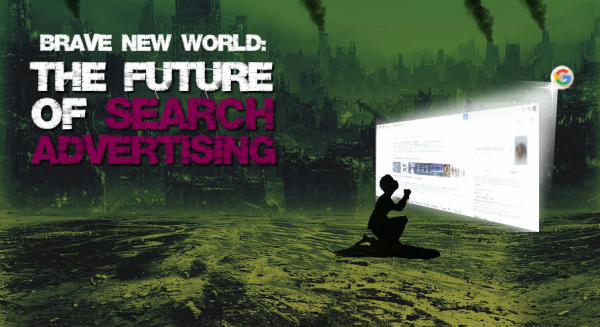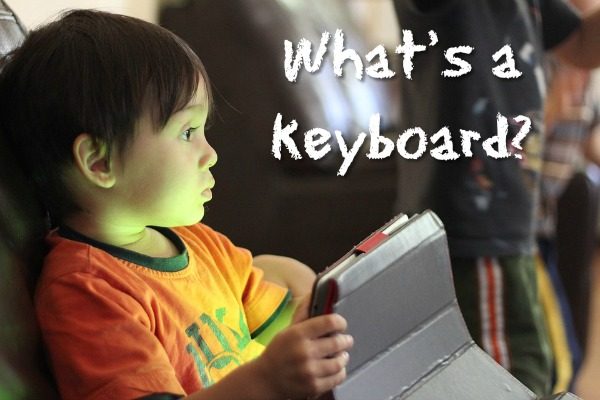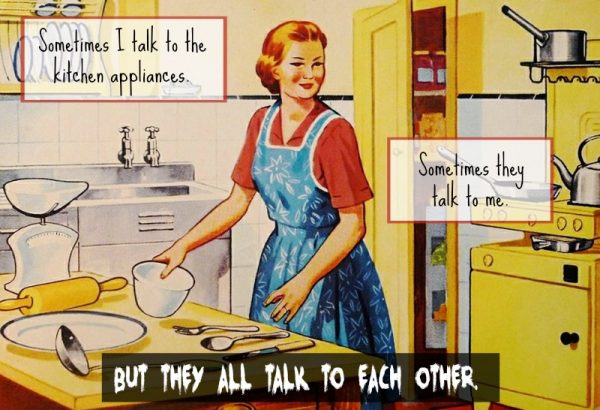
The web is evolving. Some are (mistakenly) saying it’s dying. (But it’s not.) Instead, we are moving toward a more app-based experience. Which presents the better question: Is the web browser dying?
As mobile applications are maturing into a new generation of technology, they are quickly replacing many online services that we have “traditionally” depended on a web browser to access.
We are now seeing the return of the web portal. The rise of search engines caused the early hierarchical web portals to wither in popularity for some time, as users began to browse and navigate more specifically to the content that they were searching for, as opposed to using a website directory as one would use a phone book in the past. The average user isn’t browsing the same way that they were before, and we now have a narrower expectation of the web.
Our relationship with the internet has changed.

Algorithms have become significantly more intelligent, providing a personalised experience of how we browse or use the internet, in order to prevent us from wandering too far off the beaten track in this ever-expanding, mind-bogglingly vast World Wide Web.
Search engines are becoming smarter than they have ever been, fuelled by over 2.5 quintillion bytes of new data generated each day and how users are discovering and responding to it. Search will always be an intrinsic component of how we consume this data. Our urgency for answers to our questions, appetite for new knowledge and discovery and, simply, our often childlike curiosity are very healthy human compulsions. How our search results are presented to us, on the other hand, is susceptible to change.
Search engines in their most familiar state to us now provide us with direct access to the most relevant results based on what we searched for. But we don’t need a web browser to conduct a search. We don’t even really need to be shown the results if the search engine is good enough. The search engine results pages are merely the middleman between Point A and B. It’s quite simple to make that journey now bypassing Google all together.
The Transition to Mobile

Children are being introduced to the internet at a very young age, due to there now being more content specifically targeted to their age groups – from learning activities and games to children’s book and TV shows. But the reason why there is so much now available online for young children is because there isn’t so much of a learning curve now in order to access all this new content. Toddlers no longer have to struggle with learning how to use a mouse that’s clearly too big for their tiny hands. They don’t even need to know their alphabet yet, let alone how to type on a keyboard, in order to navigate around their favourite online destinations.
Children aren’t using browsers; they’re using apps.
This is the online world that they are growing up in, and this is why app-based internet usage will become more prevalent. And why this is where companies need to seriously be considering advertising.
“In-app mobile ad spend is really the future of the mobile advertising category. Considering that people with access to a smartphone or tablet now spend an average of three hours on them per day and 84 percent of all smartphone time is spent in-app, in-app engagement is increasingly critical for brands, advertisers, marketers, and agencies.”
– Chad Gallagher, director of mobile at AOL
That sounds like a lot of apps… But of course, all the biggest free (or freemium) apps don’t want you to be using others as it’s less advertising revenue for them. WeChat, Facebook and many others are looking to embed more and more app services within their own app. From ecommerce to messaging to reading an article – all without ever leaving the app. Users are searching directly within these apps. If someone’s already on the Twitter app and they want to look up a company or what’s going on in the world, they can do so via the search function on the Twitter app itself – without having to leave and load up another app. More businesses are now advertising in social search and making the most of this new searcher behaviour.
Mobile introduces a whole new landscape; not just a pocket web browser.
Advertising in the Internet of Things
The internet doesn’t stop at mobile. Looking beyond the mobile landscape, we’re now seeing all sorts of new devices connecting to the internet, from kitchen appliances to home technology. The browser is still a useful tool for general internet browsing. But does your fridge need a browser? Does your oven need a browser? You may in future be able to download all sorts of apps for your fridge, such as a recipe book app, a calendar app, photo sliders, YouTube, or whatever… But realistically, will you be standing in the middle of your kitchen browsing the internet? No.
However, you may want to have a recipe on display or a video playing in the background as you’re preparing food. Smart devices only need to be as smart as they need to be. Nobody is ever going to need an integrated development environment for programming installed on their fridge, but they may want a simple notepad editor for memos and reminders.
Apps for devices such as these can then target a specific type of advertiser. Perhaps a local takeaway restaurant may want to take advantage of a smart fridge app’s native advertising platform to encourage those lazily browsing the contents of their fridge to order in instead. Or when searching for a recipe in an app, it tells you that you’re missing a vital ingredient based on the contents of your fridge and cupboard inventory, and you then see an ad from a supermarket asking if you want to add that product to your shopping list or next automated home delivery.
The number of connected devices is growing. They’re all talking to each other. This accumulated data between them will shape your buyer persona, making ad targeting even more accurate. According to Statista, IoT (Internet of Things) is said to hit mainstream by 2020. It won’t be long before your fridge and bedroom mirror is conspiring against you to buy more X, Y and Z. (Not to sound paranoid or anything…)

And let’s not forget about Augmented Reality and Virtual Reality…
New technologies are approaching from beyond the horizon. Augmented reality and virtual reality technologies are already well within our sight and starting to pop up in our homes. Augmented reality more so, and the average consumer doesn’t even realise the technical wizardry that goes into making a game like Pokémon GO that blends our reality with an imaginary one, or a social app that distorts our face in real-time as we voice chat our friends.
Though still early days for consumer AR and VR, at some point there will be a need for complex search engines on these augmented and virtual reality platforms. Search advertising in virtual reality is not such a crazy idea. Though it’s not something marketers and advertisers will be focusing on in the immediate future, it’s still something well worth keeping within your peripheral.
Virtual reality technology has been in development for decades. It’s taken us this long for it to be something that is now available for the average consumer. Due to the expensive price tags historically attached to the hardware, applications of virtual reality were confined to an extremely high-end market in military and industrial sectors. But, in the hands of the average consumer, advertising on this platform (let alone in a VR/AR search engine!) is an almost unimaginable new landscape to explore. But it’s an exploration mission that we must be prepared for.
Note: For an initial idea of what a virtual reality search engine looks like now, check out Sprawly. It claims to be the world’s first VR search engine, currently compatible with Google Cardboard and Samsung Gear VR.
So what does this mean for the future of search advertising?
Search advertising will still be relevant. But it may still prevail in unrecognisable forms by today’s expectations.
Right now, the biggest focus for search advertisers looking toward the future is voice search. Currently there are no advertising opportunities for voice search, which is not surprising considering it’s an emerging platform still in its infancy. But Jerry Dishler, VP of Adwords Product Management, has said: “I have long-term plans for advertising.” As mysterious as always, Google will eventually find a way to monetise voice search but so far we only have hints and soundbites to what voice search advertising would entail.
It’s certainly worth noting however that the latest research into voice search indicates that 50% of consumers are now using voice search more frequently year-on-year. There are an estimated 50 billion voice searches per month, with Google confirming at the 2016 I/O conference that 20% of all searches have voice intent and Bing reporting in May 2016 that 25% of Windows 10 taskbar searches are voice searches.
Many users were originally deterred from using voice search due to the unreliability of Siri, Cortana and Google Now. But machine learning and AI is making leaps and bounds, improving significantly within short periods of times. Months in fact. And are far more capable of understanding not only our words but the intent behind our choice of language.
Microsoft’s free upgrade to Windows 10 ended at the end of July, by which point Microsoft reported that the percentage of PCs on the internet running the new operating system had reached 21.1% worldwide. Perhaps one of the most prominent of Windows 10’s new features is the compulsory Cortana integration. There is no way to get rid of her. By default, the Cortana search bar is located in the Windows task bar. But you can disable it from your task bar. As for the Windows 10 search function in the Start Menu however, there’s no getting around it. And Cortana won’t just display search results consisting of files and apps on your computer, it will also display web search results from none other than Bing (obviously). Bing has a laughably terrible brand image but, under the guise of the friendly digital assistant Cortana, no one’s laughing anymore. This is bound to increase Bing’s search engine market share eventually with a wider Windows 10 adoption rate, as more people search directly from their operating system without having to search via browser. In fact, Microsoft stated this Spring 2016 that over 35% of its search revenue came from Windows 10 computers!
Search ads will no longer be limited to search engine websites, but will advertise to users from the operating system itself. So even if you’re a Google searcher and not a Bing searcher usually, every now and again you’re going to be using Windows 10 search perhaps to locate a file or app. But (and you may have seen this already if you’re running Windows 10) Cortana will also search the web for your query, bringing up a list of relevant search suggestions. If in future, a decent paid result cropped up from time to time, you may even be tempted to click it.
Microsoft are very aware that they can’t seriously compete with Google when it comes to browser-based searching. As of July 2016, Bing falls into second place far behind Google for search engine market share, with a disappointing 10.4%. But Microsoft thrives in the operating system market, so it makes total sense for them to push their search advertising to that platform in future. They’re already advertising everywhere else on their latest operating system…
Within Google and other search engines, search advertisers will have to start reconsidering what keywords to bid on as voice search affects the complexity of the query, with longer tail conversational queries that have a clearer indication as to intent. Previously, the user could modify their search to narrow down what exactly they were looking for. The end result being a single search query that is specific to what they’re searching for. This makes them quite easy to accurately target. If you’re only selling hot pink tricycles and someone has gone from searching “tricycles” to “pink tricycles” to “hot pink tricycles”, then you’re more likely to get some transactional love from targeting searches for “hot pink tricycles” rather than the broader “tricycles”. But, what if a voice search modified their search query in this way?:
- “Where can I buy a tricycle?”
- “What about a pink one?”
- “Is there a hot pink?”
How does the conversational structure of these search queries affect your keyword targeting?
In the far future, search advertisers will have to look beyond which search engines they are targeting and where these search engines appear. Whether they’re in a mobile app, in a kitchen appliance app or simply on the user’s desktop operating system… There will be so many more ways to search on a whole variety of platforms, but the world of advertising is always quick to keep up and the paid search landscape will learn to adapt.
And remember:
“My vision when we started Google 15 years ago was that eventually you wouldn’t have to have a search query at all – the information would just come to you as you needed it.”
– Sergei Brin, Google co-founder, 2013
But! With that in mind, Google still needs to make money from this future telepathic search engine of theirs…

